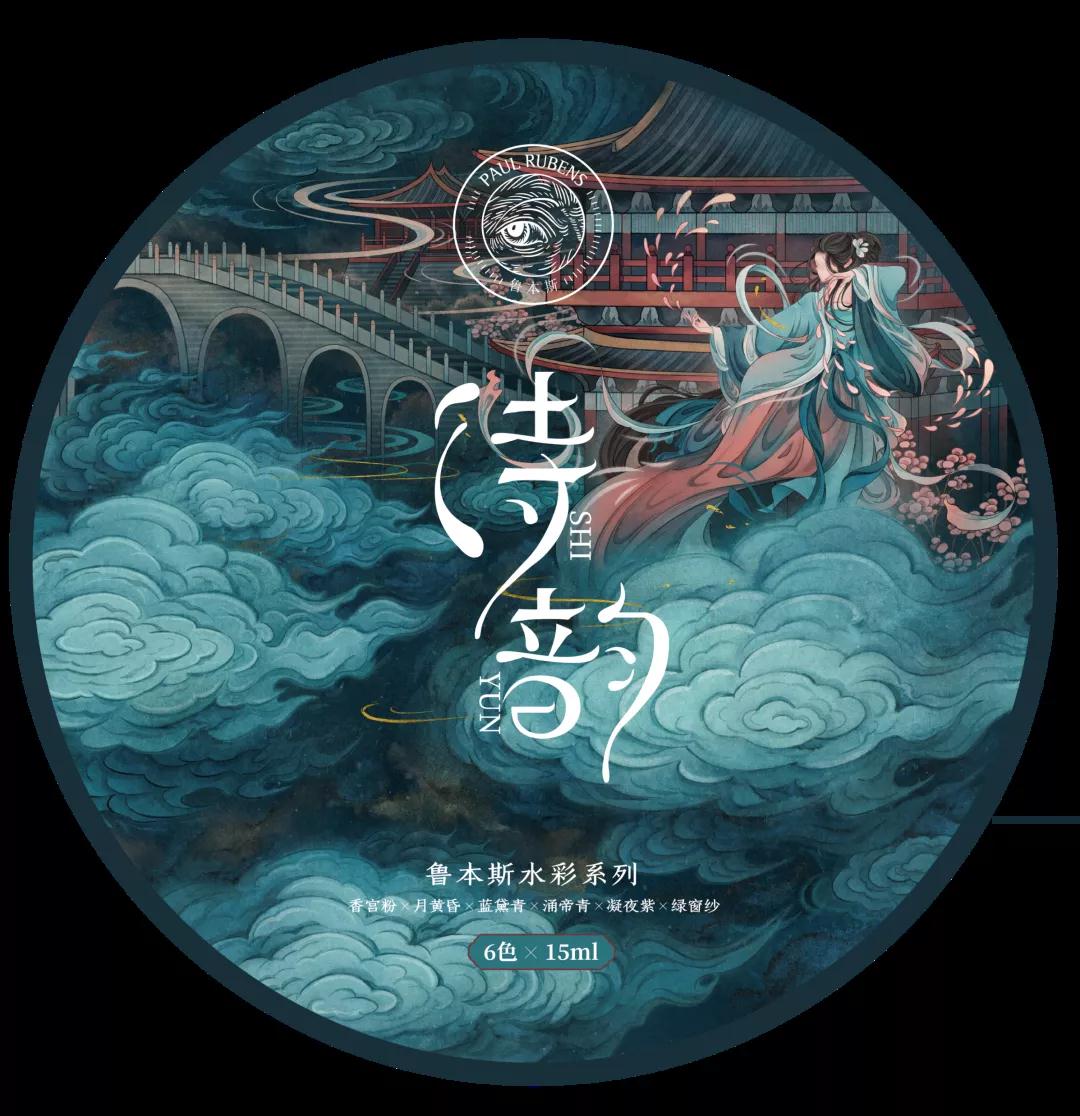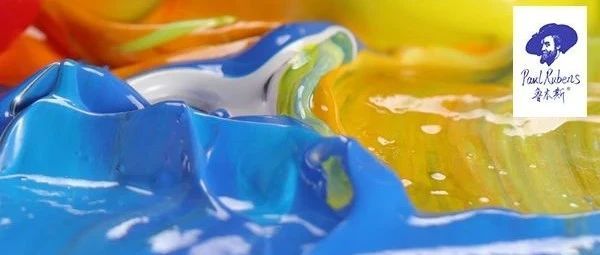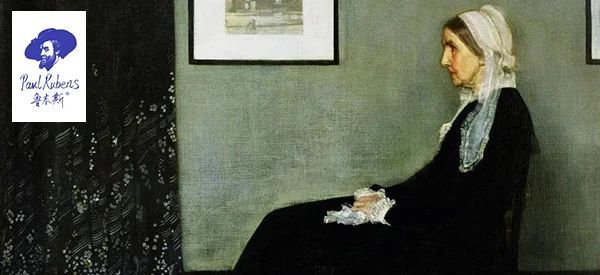
Among the oil paints, the yellow family members can be said to be quite "prosperous", cadmium yellow, chrome yellow, lemon yellow, azo yellow and so on, among which there are several kinds of azo yellow pigments alone. As one of the three primary colors, yellow is also very widely used, and in the history of oil painting we are familiar with, very fond of using yellow oil paints are Van Gogh, Gauguin and other oil painting masters. So, today, Mr. Lu is here to nag you about the mineral colors in yellow oil paints.

When it comes to the mineral color in yellow oil paints, the idiom of "believe in yellow" must have been heard by everyone, which is also called stone yellow, equivalent to the ancient people's correction fluid, the ancient people used yellow paper to write, and then used it to correct after writing mistakes, which was later derived to change at will. With the application of this term, the mineral pigment estrogen has also become familiar to everyone.
It is not easy to obtain estrogen pigment, and often requires a lot of hardships and difficulties, but this also allows estrogen to show a gentle tension beauty in the color presentation, as if the untamed is tamed, but still maintains its own pride.

Erythrone Color Card
The main component of estrogen is arsenic trisulfide, a low-temperature hydrothermal mineral and alteration product of other arsenic minerals, which has a brilliant color, a lemon-yellow color like a dusk sunset.

From the previous color card, we can clearly see its transparency and covering power, estrogen is a translucent pigment, but its light and sunlight resistance is relatively weak, and its pigment stability is also relatively weak. It cannot be mixed with lead, mercury and inorganic colors containing iron, as they are susceptible to chemical reactions, for example, when mixed with lead, the sulfur in estrogen reacts with the lead and the color will turn black. This tends to affect the preservation and fidelity of the painting at a later stage.
Although estrogen gives a strong visual impact when it is spread over a large area, it is generally not recommended to be used alone over a large area because its light and sunlight resistance is not as excellent, but it is still good for local spot lighting. It can highlight the real and near places. Here also need to note that estrogen is toxic and should be washed in time after use.
Here is an extra word about how to make the above color card.

1, select the same length and width of cardboard, draw a black line in the middle, the black line to the two sides of the distance is equal.


2, with black tape will be wrapped around the ends of the cardboard fixed, note that at this time the tape wrapped part is also equidistant. (Here the role played by the tape is to make the two ends of the cardboard the same height.



3, here, the prep work is over, ready to brush the color card, squeeze out the pigment, use the spatula with the same force from top to bottom evenly down scraping. Scrape to a thickness of 15 silk (that is, equivalent to the thickness of two hair strands). At this point a complete color card is made.

If there is female yellow, there must be male yellow, and the main component of male yellow is tetraarsenic tetrasulfide, also known as stone yellow, gold stone, cockscomb stone. Often with androgynous that is three arsenic sulfide, pyroxene, cinnabar symbiosis, at a temperature of 300 degrees Celsius (531k) will be oxidized to arsenic trioxide, that is, arsenic, of course, is generally not up to such a high temperature, so normal use is no problem. Then we first look at its color card.

As we can see from the color card, male yellow is also a transparent pigment and translucent like female yellow, with warm color, orange phase, superior coloring power and the same drying time as female yellow. Its light and sunlight resistance and color stability are similar to that of female yellow, and its color mixing taboos are similar to those of female yellow.

In painting use can be used to do local highlighting, highlighting the solid. However, it is not recommended to use it as a base for large areas. Yellow is also a toxic mineral pigment, so it is important to wash your hands after use to avoid accidental ingestion.
The main component of yellow ochre is also iron oxide, with the molecular formula Fe (OH)3, a natural earthy mineral containing iron oxide, which has been the basic color used by artists in various civilizations since prehistory. Its color intensity is related to the content of its hydroxyl iron oxide, for example: light yellow when it contains 12-25%, positive yellow when it is 25-40%, and golden yellow when it is 40-75%.

Through its color card, we can see that it is also a transparent pigment, it has strong coloring power, and after drying the color layer is solid, resistant to light and sunlight, the color properties are more stable and not easy to change color over time.
Yellow ochre has a warm hue, close to the earthy color, and this color also gives a more intuitive sense of land substitution, with a sense of ordinary simplicity, and is often used for landscape painting, giving a strong sense of warmth and comfort in the rustic simplicity under the sun.

Yellow ochre pigments can be mixed with any pigment, and can be used in paintings to lay out a large area of color, to give the picture an overall tone, to create a majestic, thick visual feeling, and also to embellish small areas locally, to highlight the real, and to show a small area of exquisite feeling.
The above mentioned yellow mineral colors are relatively common, the following earthy colors may not be so common, starting with the lightest color of lemon ochre (Fe (OH)3).

Lemon ochre is also an earthy natural mineral containing iron oxide, the main component of which is also iron oxide, and is named lemon ochre because of its lemon-yellow hue, the lightest of the pigments described next. Its counterpart is dark yellow ochre (Fe (OH)3 * Mn * Fe2O3), and from their molecular formulas, you should have noticed the obvious difference in their material composition, which is also presented on their color cards.

Lemon ochre and deep yellow ochre are transparent colors, with good light and sunlight resistance, stable performance, not easy to change color over time, and can be mixed with other colors.

The lighter shade of lemon ochre gives an ethereal, clean feeling in space, while the darker yellow ochre gives a more majestic, majestic feeling of "the lonely smoke of the desert and the fullness of the setting sun of the Yangtze River". If presented in a landscape painting, it should be a good match with the Danxia landscape.

We all know that the soil of different places will show different colors due to its different humic substances, natural environment, climate factors and other factors. Among them, iron oxide can be called a master of color mixing. Take for example these three pigments - raw Siena ochre, Cebros earth yellow and Hatena earth yellow. These three earthy yellow hues derived from the mineral natural earth from different regions. Due to the different content of the components in them and the different reactions of iron oxide and other substances, they end up with different shades of color, and we can look at their molecular formulas in turn.
Raw Siena ochre Fe203*nH20* + Al203 (aluminum trioxide) Mn02+ Si02*
Cebros earth yellow Fe203*nH2O*+Al2O3(alumina trioxide) MnO2+ Si
Hatena earth yellow Fe203* MnO2
Due to the difference of its molecular formula, they present a certain difference in color phase.


Cebulos earth yellow

We only look at the color card, do not think that Cebros earth yellow and Hatena earth yellow does not look most of the difference, (this is a bit related to the imaging effect) but when we apply ourselves, or can feel its subtle differences, Cebros earth yellow will be a bit higher than Hatena brightness. It will be a little more shiny.

These three colors are all transparent. They are light and sunlight resistant, with stable pigment performance and not easy to change color over time. It can also be mixed with other pigments, and when used alone, it can be used as a large-area pavement color, or a small area for embellishment. It is used more in traditional style paintings or landscape paintings. For example, painting some earthen houses, land. Can also be used to deal with the contrast between light and dark, to highlight the sense of light.
The above is all the mineral color system introduced in this article, and the mineral color is also known for its relatively stable performance, not easy to change color, excellent quality, pure and bright, you may also notice that all the above pigments are not opaque color system, usually natural mineral color is basically translucent color system, and its pure and bright is reflected in the purity of the pigment, and the filler in the pigment, a good pigment A good pigment uses a high purity pigment without adding other fillers, so that the pigment will not give a dull and depressing feeling even if it is a gray tone pigment. Some pigments, on the other hand, can give a dark, grey feeling when used. Although some painters prefer which gray tone, such a feeling can also be achieved through the choice of varnish, which is more conducive to the preservation of the work. Instead of achieving it through pigment, because that kind of pigment usually has other fillers added, which will make the surface of the pigment uneven, as if it is covered by something. So it looks like it gives an unreadable and unclean feeling.

An additional point: As some painters may be concerned about the drying time of the painting under the condition of no light. Therefore, we also conducted a test on the above eight colors, that is, how big the difference of its drying time will be under the constant temperature without light, and the experiment proved that the above eight colors, under the constant temperature without light, the female yellow and male yellow will be prolonged for about double the time, and the six colors other than male yellow and female yellow, their drying time will be prolonged for about 12 hours on the original basis, that is, about one day. about one day.
As for the drying time of other pigments, experiments have been done abroad, and the drying time will be different for different colors because of their different compositions. Some pigments contain some heavy metals, so the drying time is relatively fast, while others may be very slow, which presents a relatively large time span.
When it comes to mineral color, it may also mention mineral streaks, which are the color of the mineral powder. It is generally the color of the powder left behind when the mineral is scratched on a white unglazed porcelain plate.

The streak of a mineral can be consistent with its own color or inconsistent. For example, the color of galena is lead gray, but the streak is black; the color of plagioclase is white, and the streak is also white. The stripes of minerals can eliminate false colors and weaken other colors, so it is much more stable than the color of minerals, so it is one of the important signs to identify minerals. Of course this is a very superficial mention, if you are interested can also go to the relevant information, and specific experiments.

At the end of the article, we gave you a mix of these yellow pigments and titanium white, you can take a look at it, and I hope it can provide a little bit of reference advice for your color mixing.
This is basically the end of the article, and its specific use is still according to each painter's own style or habit to use, there is no dead guideline. And each new attempt at color is also a relatively happy thing





